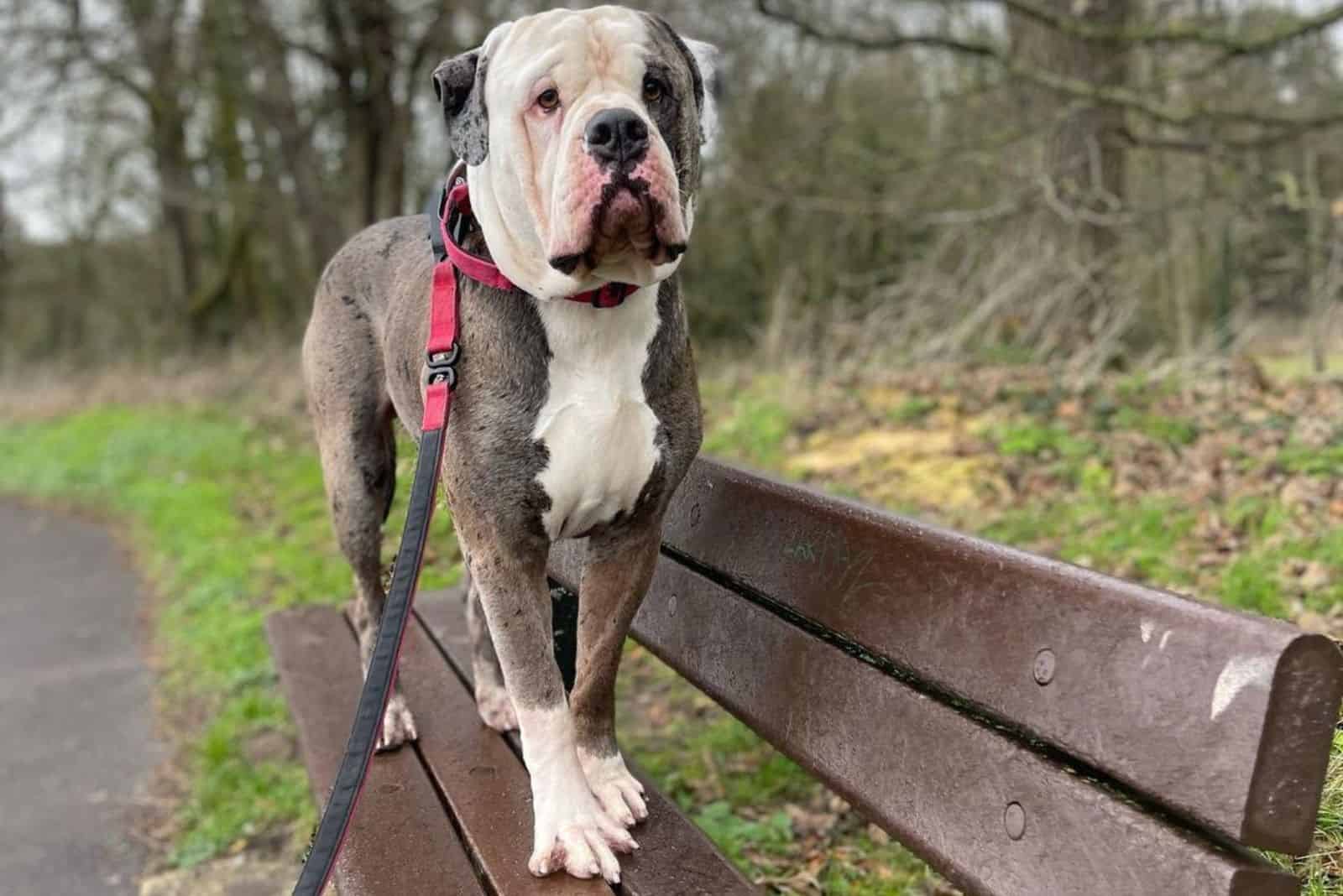The Alapaha Blue Blood Bulldog does have a wonderful disposition and gets along great with kids, though they can occasionally be a touch distant. They are a devoted breed that makes excellent companions and guard dogs.
It is a great all-around working dog and keeper of any family due to its multifarious flexibility, positive outlook, and love for family.
It should be taken into consideration that the personality that comes with management potential prefers to self-appoint; hence, it will seize control of every position.
The Alapaha Blue Blood Bulldog enjoys working, and is more than capable of doing it with great zeal, intelligence, and strength. Early socialization as well as training are essential in order to prevent its size and activity from having the Baby Huey effect, when it accidentally hurts smaller pups as a result of its eagerness to work.
This dog is perceptive and smart. Adult specimens may adopt an unflinching or distant attitude toward newcomers, which should not be punished. Some might even grow to be intolerant of canines that are of the same sex.
Dogs that disrupt the show ring, however, should be excluded. This breed should never act fearfully or aggressively toward people without provocation.
What Is An Alapaha Blue Blood Bulldog?
Alapahas are perceptive, gregarious, and confident. They typically avoid interacting with unfamiliar people and dogs. They make a great family dog in the household of an experienced owner.
A bull breed called the Alapaha was created in the American South as a “catch dog” to herd or capture runaway cattle or other livestock.
One of numerous breeds thought to resemble the original Bulldogs of England is the Alapaha Blue Blood Bulldog. It is a “catch dog,” which means that his job is to capture, hold, and drive obnoxious livestock and hogs.
However, these days, this dog serves more as a family member and guardian.
History Behind This Dog Breed
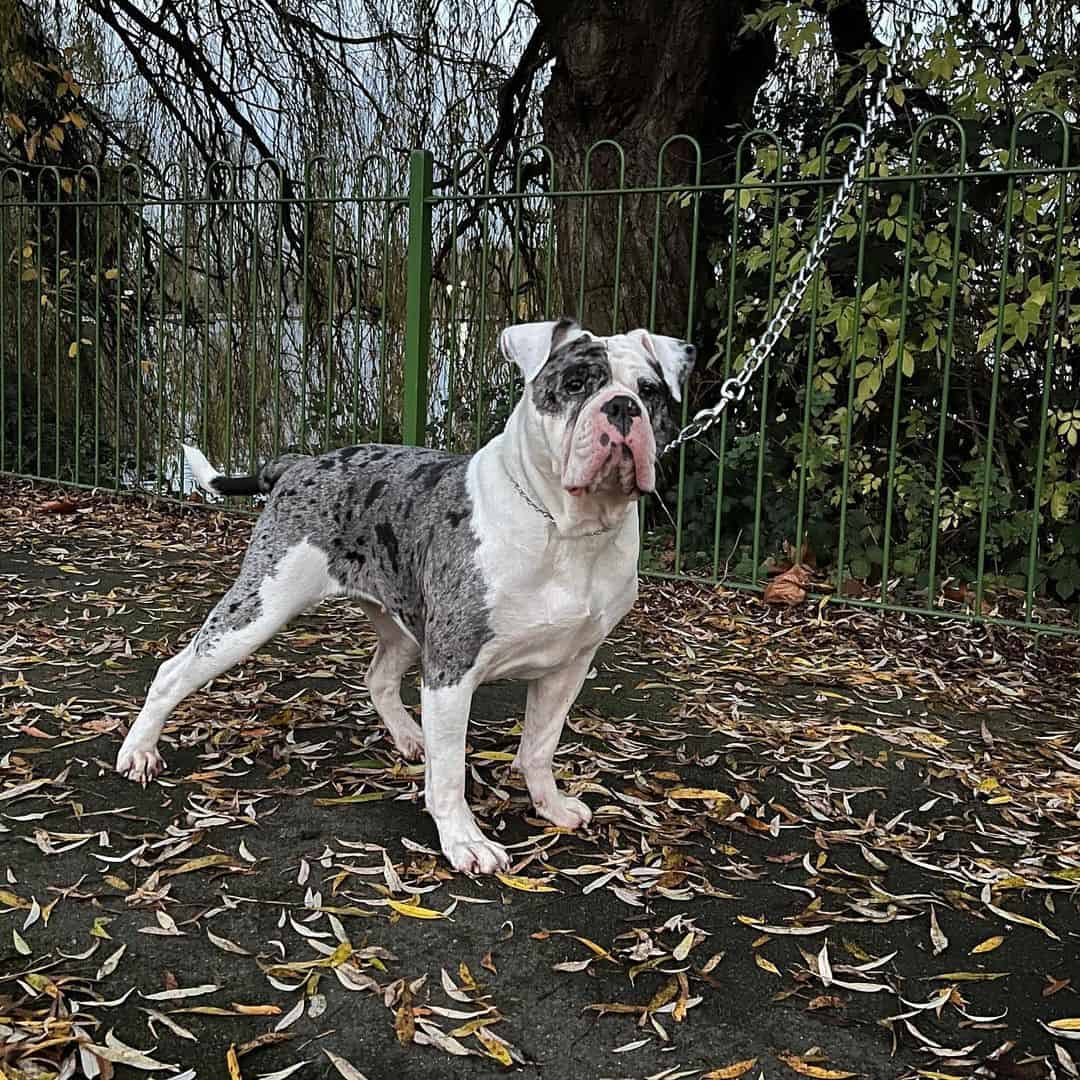
Although it is believed that the Alapaha has been around for over 200 years in the southern United States, there is no evidence of the breed existing prior to 1979.
He most likely descended from the different Bulldog breeds and crosses that were brought to this nation by the first settlers. As opposed to the Bulldogs of today, these animals are taller and much more athletic.
They were exclusively working dogs, never shown, and used to move stubborn livestock and pigs, hunt vermin, and protect farms.
A group of dog enthusiasts from the South decided to save these quickly-vanishing dogs in 1979.
They established the Alapaha Blue Blood Bulldog Association, gave them the name — Alapaha Blue Blood Bulldog — and wrote a breed standard.
Some sources have claimed that this dog breed’s name derived from the Alapaha River.
Additional Info On The History Of This Dog Breed
The Alapaha Blue Blood Bulldog is the product of three generations of PaPa Buck Lane of Rebecca, Georgia, in the United States. The goal of the operation, which got its start in the 1800s, was to save the southern Georgia “plantation dog,” which was on the verge of extinction.
This unusual guard dog, like the bulldog, is descended from Otto, Buck Lane’s dog. According to Lana Lou, her grandpa always kept an “Otto” around the estate. Because these Bulldogs were competent in both security duty and wood work, one Otto was all that was required.
When PaPa Buck was struck and killed by a train in 1943, his son, Otto, demonstrated his unfailing love by making frequent visits and keeping watch over the cemetery.
Lana Lou Lane, Buck Lane’s granddaughter, carried on the breeding program until she passed suddenly on July 20, 2001 while sleeping.
This powerful breed, like the Plott Hound, was developed by a single American family, and its future depends on the care it receives.
Although this dog’s English Bulldog forebears worked as pig and cattle herders, the Alapaha Blue Blood Bulldog is raised only for protection and companionship.
The late Ms. Lana Lou Lane’s “Alapaha Blue Blood Bulldogs” were originally recognized by the Animal Research Foundation (ARF) as an all-breed registry in 1986.
Prior to her departure in 2001, Ms. Lane held the ARF Certified Breeder designation. Following her death, her adult daughter, Mrs. Vivian Lane, carried Ms. Lane’s business operations. Later, Mrs. Vivian Lane’s family decided to sell the kennel owned by her daughter.
What Does The Alapaha Blue Blood Bulldog Look Like?
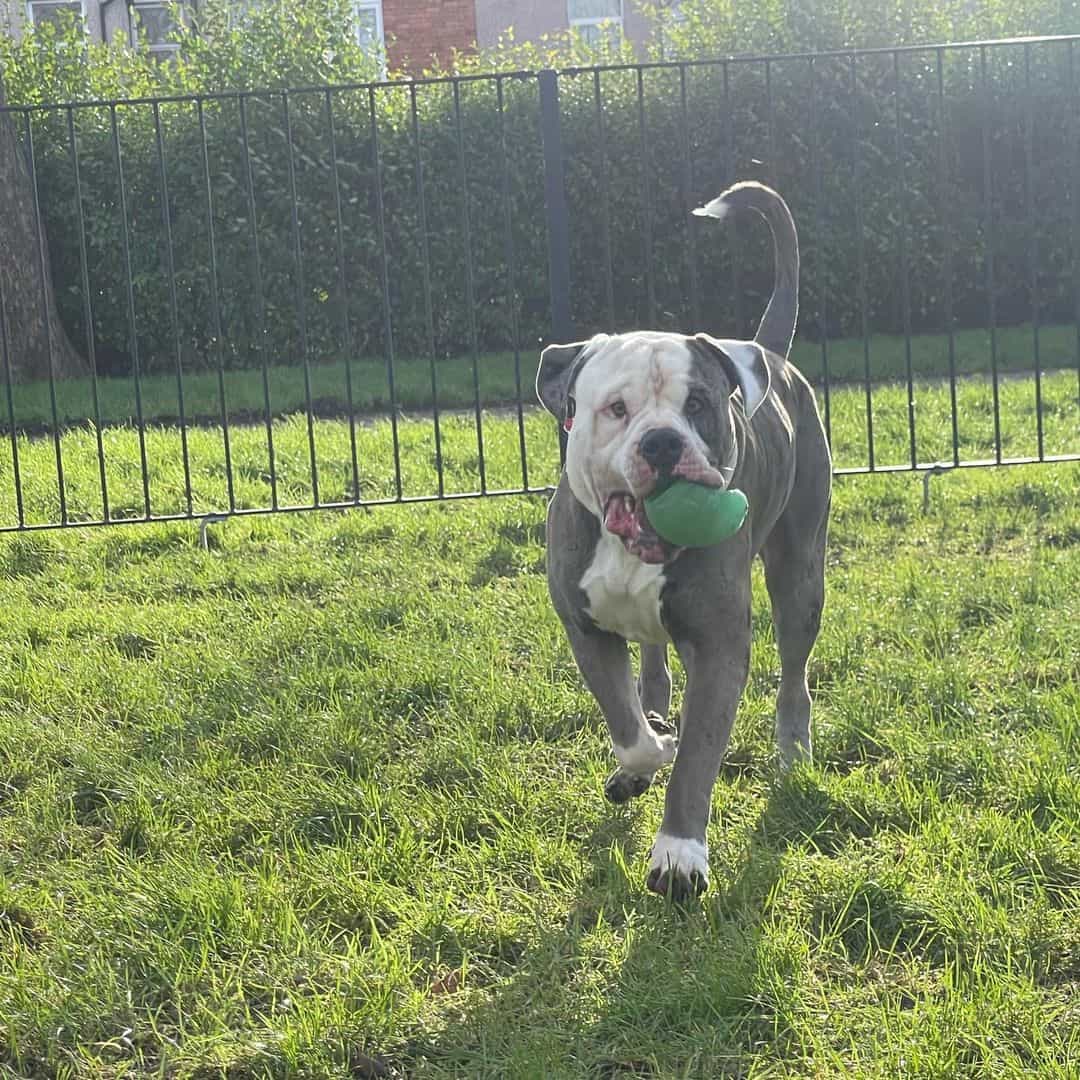
The Alapaha Blue Blood Bulldog has a large head, naturally droopy ears, and an exaggerated, well-developed body. Upper lips that are slack cover the pronounced muzzle.
Some sources claim that this dog breed is a mix of the Mastiff, the American bulldog, the old English bulldog, the white English bulldog, or the southern white Bulldog, and some purebred English Bulldog.
The large eyes are separated widely. The Alapaha has a somewhat short, stiff coat. Blue, brown, or red merles, with white or cocoa and white trimming, are preferred colors. Its coat colors are similar to those of the American Bulldog breed.
In addition, blue-glass eyes as well as marble eyes are desired. Never are the tail or ears docked or cropped. The body is powerful and strong.
The chest is wider than the hips, which are well-muscled. This dog is tall at the shoulders, and has a straight back. The feet resemble those of a cat, and the dewclaws are almost never removed.
This dog breed’s typical height is 24 inches (61 cm). Males of this species typically weigh up to 100 pounds (47 kg), and females are around 78 pounds (34 kg). Males and females differ significantly from one another.
Even the smallest males can be nearly twice as heavy as females. They come in blue merle and brindle colors, mixed with white.
Specifics Regarding Appearance Of The Head
The shape of the skull can be anywhere between a somewhat mesocephalic skull type, which is somewhat harshly wedge-shaped like the standard type, and a slightly flat-faced skull type, which is clearly square-shaped like the bully type.
Any variation of Alapaha Blue Blood Bulldog should not have a head that is too long, too narrow, looks like an American Pit Bull Terrier, or has an abnormally brachycephalic skull that looks like an English Bulldog.
Despite being enormous, the dog’s head is proportioned to its size.
It is extensive and strong. The top of the skull is flat, lengthy, profound, and broad, being (at minimum) as broad as it is long when examined from one side to the opposite in front of the ears. It is ideal for the forehead to be wider than tall.
The eyes are average in size, evenly spaced, and are oval, lime, almond, or wide-almond in shape. Any color, including blue, hazelnut, caramel, or medium to dark brown is appropriate. Eyes with spots, flecks, marbling, or varied colors are all acceptable.
Never do the eyes protrude or sag. The eyelids must fit snugly enough without any entropion or ectropion. When there are colored patches on the eyelids, they should be well-pigmented.
The ears on the lengthy top skull seem to be small to moderate in size. They are located at the top and outside of the skull, and set somewhat far back. They might be rose, drop, or button-shaped.
The fold in drop ears needs to be aligned with the head. Small rose ears that don’t seem to “fly away” when disturbed are required. Cropped ears are inappropriate because they take away from the Alapaha Blue Blood Bulldog’s distinctive expression.
A broad, deep, and powerfully-developed snout is present. The muzzle’s plane, also known as the bridge, is straight.
Specifics Regarding Appearance Of The Body
The ABBB’s neck and forequarters are its core, and this is where a lot of his grabbing and holding skill comes from. As a result, the breed needs a strong neck that can move freely.
It ought to be slightly wider at the base, close to the shoulders and chest, and slightly narrower towards the base of the head. It is acceptable to dewlap just slightly. It is improper to have a short neck or a weak neck.
It never has a long or low-slung body that is racy or elegant. It is solid, substantial, and compact. The shoulders shouldn’t be extremely broad and human-like as it detracts from endurance, strength, agility, quickness, and stamina.
As a natural continuation of the topline, the tail is neither positioned high nor low on the croup. It has a thick base that tapers in the direction of the tip. It could be “pump handled,” straight, slightly bent, or shaped like a lightsaber.
The final vertebra’s tip should roughly reach the hock joints when pushed down. When a dog is alert, excited (held up), or peaceful, it can be determined by the expression on its tail.
Never coil, twist, or kink the tail such that it hangs over the back. A natural tail is preferable since it provides stability and balance while working. Tails that have been docked are inappropriate for this breed.
Personality Traits Of The Alapaha Blue Blood Bulldog
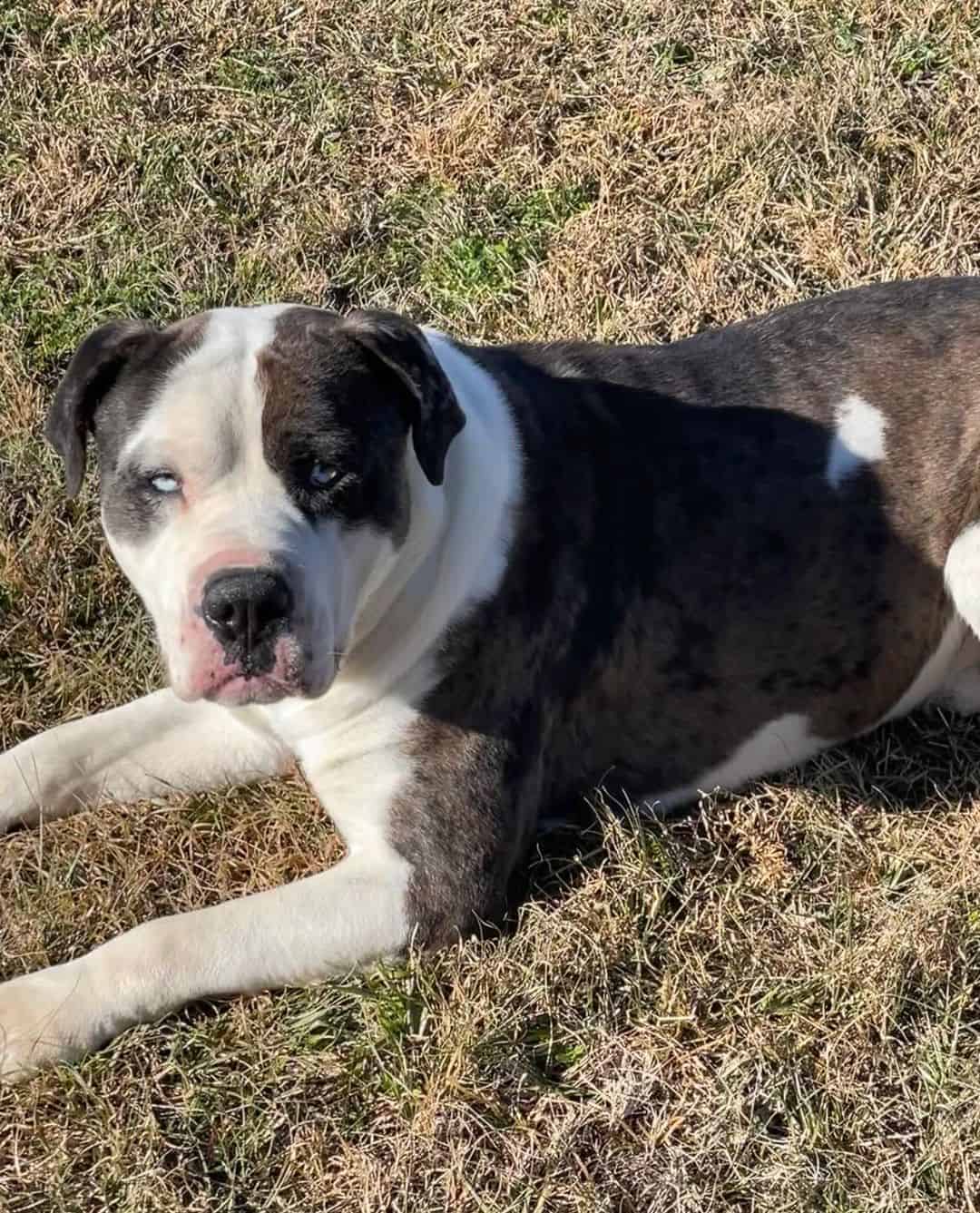
The Alapaha is described in the breed standard as being obedient, possessive, and watchful, as well as protective from an early age. He is a demanding family dog that is faithful and loyal.
The Alapaha values being a member of his family. Being wary of strangers, he makes a great watchdog. He is, however, totally inappropriate to be used as a “guard dog” and left outside in the yard by himself.
This agile dog makes a strong and engaging friend for kids. When he is reared with them, he greatly enjoys their company. He may interact well with cats as well as other animals when raised with them, but he’s likely to be hostile toward canines he doesn’t know.
The self-assured Alapaha would do best in a working household with an experienced dog owner. If he is led by an inspiring figure, he can show respect, be brilliant, and be very trainable.
The moment your puppy arrives home, you should begin training him. He’s still young, only eight weeks old, but he’s intelligent and will learn anything you teach him. Waiting until he is six months old to start training will result in more difficulty to control the dog.
Attempt to socialize him by enrolling him in puppy kindergarten the moment he is between ten and twelve weeks old.
Discuss your needs with the breeder, be as specific as possible, and ask for help when choosing a puppy. Once they are aware of your lifestyle and personality, breeders can make recommendations that are uncannily correct given their daily contact with the puppies.
Whatever you want in an Alapaha, search for one that has been socialized from an early age, has wonderful parents, and has had a good upbringing.
Is The Alapaha Blue Blood Bulldog A Good Family Pet?
The Alapaha Blue Blood Bulldog is quick to learn, and is obedient. This breed’s “royal” tendencies are the reason for its name. It makes a fantastic watchdog and guard dog. They also make terrific companion dogs, and they will defend their owner to the grave.
Aside from being great guard dogs and companion dogs, these dogs are also one of the best family dogs of all bully breeds.
This dog is also a great protector of children. They are hearty canines that are active, athletic, and thoughtful. Becoming the pack leader is the goal of dog training.
A dog’s instinct to maintain order in their group is normal. When humans and dogs coexist, we take on the role of the pack leader. Under a single leader, the entire pack works together, and boundaries are established.
The dog should come after you and all the other individuals in the pecking hierarchy. Your relationship can only succeed in every aspect if it is this way.
They thrive when they are a part of a pack, so your Alapaha should be made aware of his position in the pack right away.
They are robust, athletic canines that are stocky in build. Additionally, unlike how they appear, they do not drool.
They don’t have breathing issues either, unlike their English Bulldog cousins. These dogs serve as great family pets as they are especially attached and protective of children.
Is The Alapaha Blue Blood Bulldog A Healthy Dog Breed
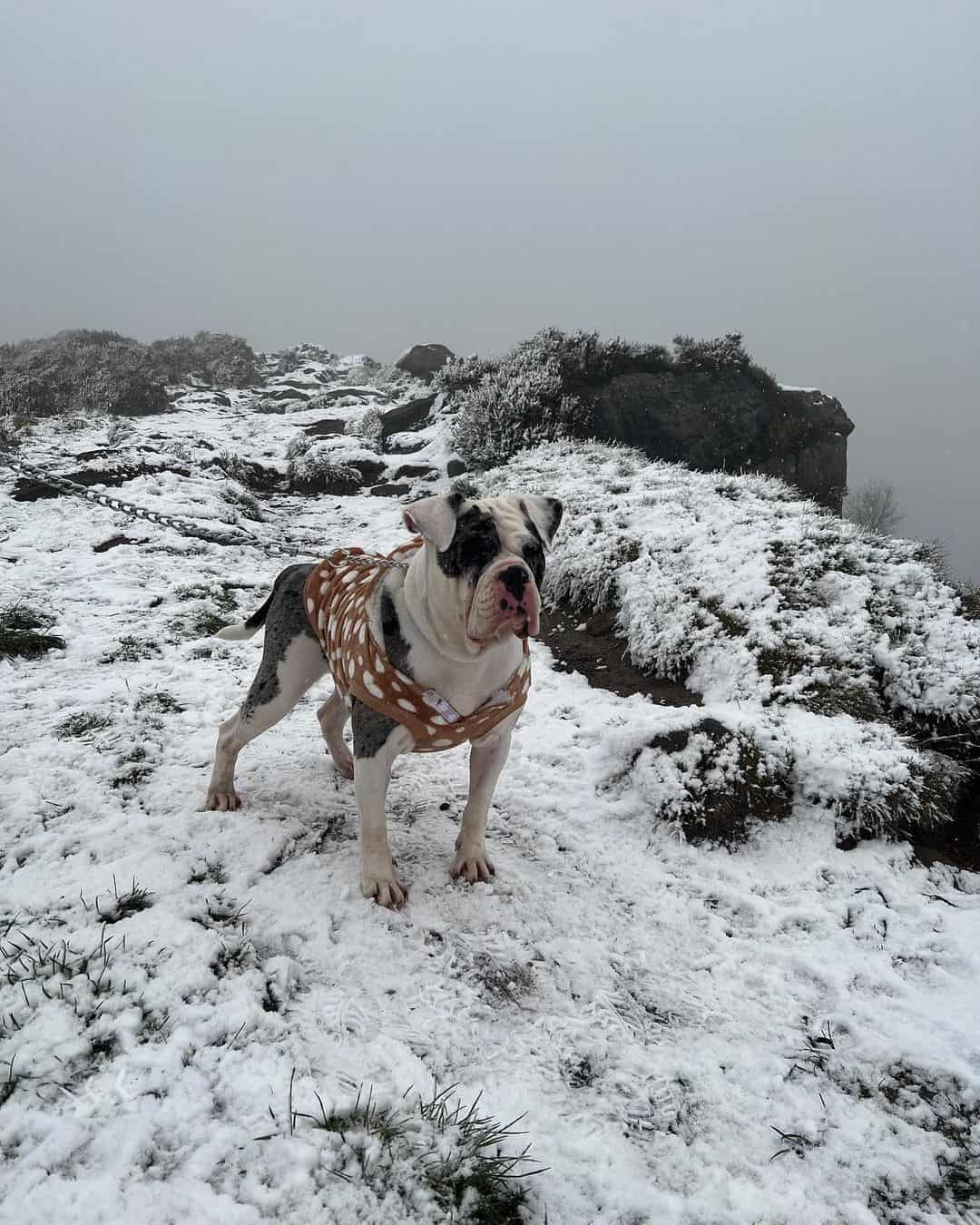
Similar to how all individuals have the ability to inherit a certain disease… all dogs have the capacity to have hereditary health issues.
Run away from any breeder who does not provide a health guarantee for their puppies, who claims that the breed is completely healthy and has no known health issues, or who claims that their puppies are kept apart from the rest of the family for health reasons.
A good breeder will be forthright and candid about breed-wide health issues as well as the frequency with which they manifest in their lines.
Potential health issues in Alapaha Blue Blood Bulldogs could include hip dysplasia, hereditary deafness, entropion (when the eyelid curls inward), and skin issues.
Finding a trustworthy breeder who is dedicated to developing the healthiest animals is essential because not all of these ailments are evident in a growing puppy, and it is impossible to know whether an animal would be free of them.
The dog’s parents (and grandparents, etc.) should be able to show independent certification attesting to the fact that they have been examined for common flaws and found to be fit for breeding. Health registries can help with that.
A respectable breeder will be able to provide you with proof that the puppy’s parents have hip dysplasia certifications from the OFA or PennHIP, hearing clearances from the OFA BAER, and current eye clearances from the Canine Eye Registry Foundation.
Avoid buying a puppy from a breeder who is unable to give you written proof that the parents are free of breed-specific health issues. Genetic health testing (DNA tests) cannot be substituted with a “vet check” for the dogs.
Also, have in mind that this dog is most popular in America, and that is the place you will be most likely to find your dog.
Possible Health Issues Of The Alapaha Blue Blood Bulldog
Breeders take great care to only select the healthiest and most attractive dogs for breeding, but Mother Nature occasionally has other ideas, and a puppy still gets one of these disorders despite careful breeding techniques.
The majority of the time, dogs can still enjoy a happy, healthy life because of advancements in veterinary medicine. Inquire with the breeder before purchasing a puppy about the ages and causes of death of the dogs in their lines.
Once you’ve welcomed a new puppy into your household, keep in mind that you have the power to shield him against one of the most prevalent health issues: obesity.
One of the most straightforward ways to increase an Alapaha’s lifespan is to maintain a healthy weight. Utilize your preventive skills to the fullest in order to guarantee a healthier dog for life.
The potential health problems of this dog breed are hip dysplasia, skin allergies, deafness, and some genetically-inherited diseases.
How To Take Care Of The Alapaha Blue Blood Bulldog
The silky, shedding coat of the Alapaha Blue Blood Bulldog moderately sheds. To keep his skin and fur fresh, and to completely remove hair, brush him at least twice a week.
When the Alapaha gets dirty, give him a wash in addition to cleaning his ears and trimming his nails as needed.
The short, rigid, shiny coat of the ABBB means that it don’t need much maintenance. You can help reduce shedding by brushing them once a week to eliminate dead hair.
You won’t, however, be covered with dog hair because dogs are ordinary shedders. Only bathe your doggy pal when it is absolutely necessary in order to maintain a fresh scent.
Oh, and their tail should indeed be left alone… docking is not necessary.
This breed doesn’t require much else but that!
Training And Exercise
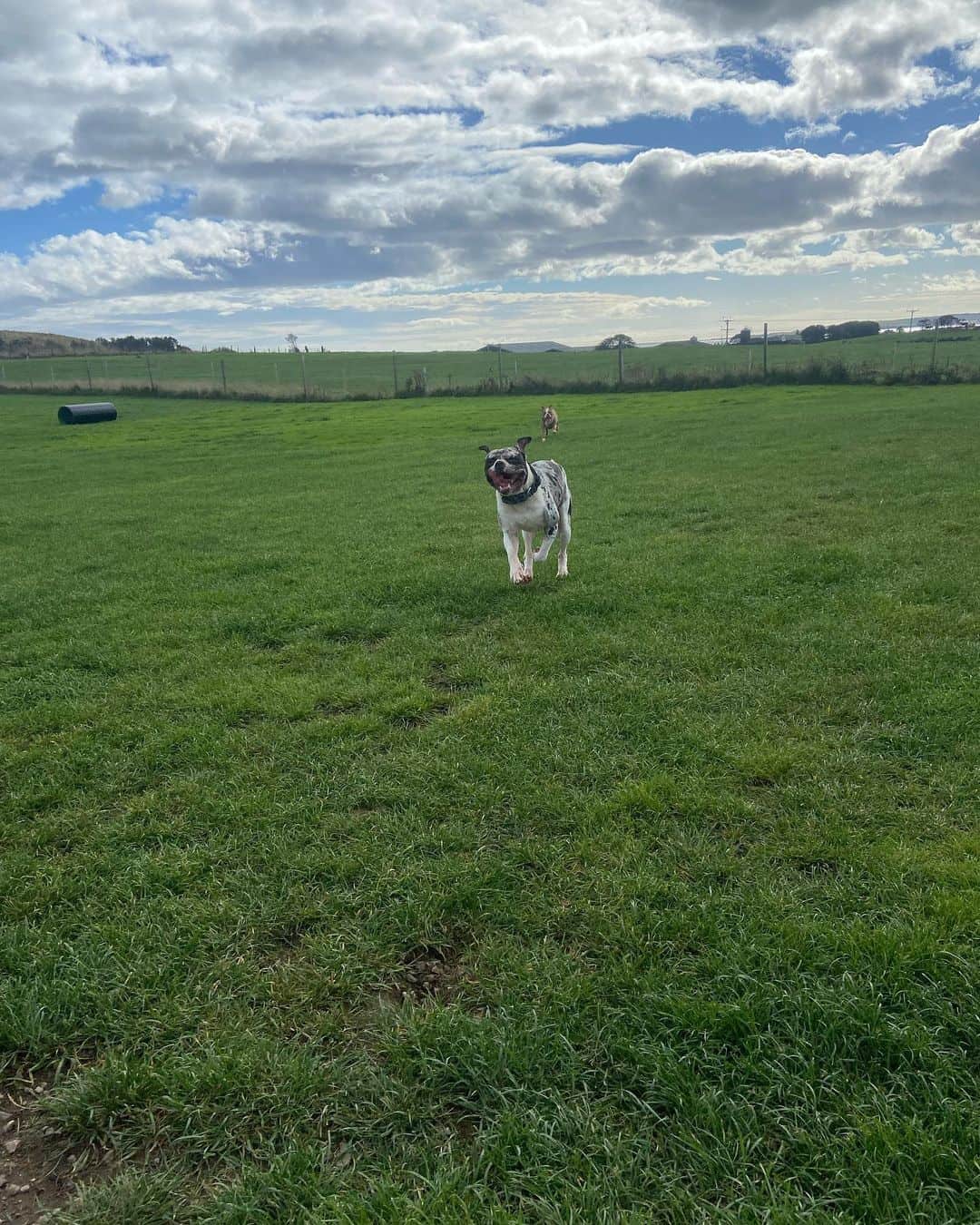
The Alapaha requires a task to accomplish because of its moderate activity level, which can range from accompanying you while on a leash when you jog to regular training sessions.
Expect to jog or walk him at a minimum of a mile per day, in addition to around 20 minutes of training.
When you’re walking him, keep him on a leash at all times. Due to his high prey drive and territorial temperament, the Alapaha Blue Blood Bulldog needs a robust, sturdy fence that is at least six feet high to contain him.
Alapaha Blue Blood Bulldog puppies seem to be constant chewers, just like any dog, and because of their size, they may inflict a lot of harm. Give them access to the house only once they have proven their trustworthiness.
Additionally, keep your Alapaha puppy active by engaging it in training, play, and socializing activities. A bored Alapaha will engage in destructive behaviors, including gnawing, digging, and other unwanted actions.
The Alapaha Blue Blood Bulldog ought to spend a lot of time with his family both inside and outside. It’s cruel to chain an Alapaha Blue Blood Bulldog outside and give him little to no attention. This can make the dog aggressive and destructive.
Socialization
Socialization at a young age must occur frequently.
Buy a puppy from a breeder who nurtures their puppies in the house, and makes sure they are exposed to a variety of household activities, noises, and people before they go to their new home.
Take your Alapaha Blue Blood Bulldog to puppy school, visit friends and neighbors, and take him on outings to the neighborhood stores and businesses in order to continue socializing him throughout his life.
Only by doing this will he be able to distinguish between what is typical and what actually poses a hazard.
When you first get your Alapaha Blue Blood Bulldog puppy home, start teaching him while he is still of a reasonable size. Though intelligent and teachable, he has free will.
With this breed, a nothing-in-life-is-free method that makes puppies “earn” their food, toys, rewards, and playtime by following a command generally yields positive results.
He also reacts well to any positive reinforcement style of teaching that includes praise, games, and sweets as rewards.
An Alapaha Blue Blood Bulldog should always go to puppy kindergarten and then basic obedience training, especially if you are dealing with a trainer who is familiar with the Alapaha Blue Blood Bulldog’s way of thinking.
An Alapaha that has been properly socialized and trained can get along with other animals, and shouldn’t be hostile toward other canines unless they pose a threat.
Advice On Finding A Good Breeder
The secret to choosing the ideal puppy is to identify a reputable breeder.
A good breeder should connect you with the appropriate puppy, and will undoubtedly have completed all the necessary health certificates to filter out health issues to the greatest extent feasible.
He or she is mainly concerned with finding their puppies good homes rather than with making a lot of money.
Good breeders would encourage your inquiries about personality, health certifications, and how the dogs are to live with, and they will promptly respond with inquiries of their own regarding what you’re looking for in a dog, and the type of life you can offer it.
A good breeder can describe the background of the breed, discuss why that puppy is deemed pet caliber and another is not, and go through the health issues that the breed faces as well as the precautions he or she takes to prevent them.
A breeder ought to desire to serve as a resource for you all the way through the life of your dog.
Final Word
The outcome of a lengthy breeding program is the Alapaha Blue Blood Bulldog, also known as the Old Southern Bulldog, and the Old Timey Farm Dog. The breeding program for Lana Lou Lane began in Rebecca, Georgia’s Alapaha River area, in the 1970s.
The traditional “Plantation Dogs” of the South have been employed for generations as friends and as “do-all” farm dogs.
They were defending the farm and employees, protecting the household from outsiders, guarding cattle from carnivores, and herding livestock, while others were also instructed to catch and keep feral pigs until their owner arrived.
It’s important to choose the ideal Alapaha pup for your household. A lifetime commitment will be required for your new family member; therefore, it’s crucial to pick a puppy that will complement your personality and fit into your family’s lifestyle.
To assist you in receiving a dog with predictable traits like temperament, drive, and size, it’s a good idea to find a reliable breeder who exclusively produces purebred Alapahas.
